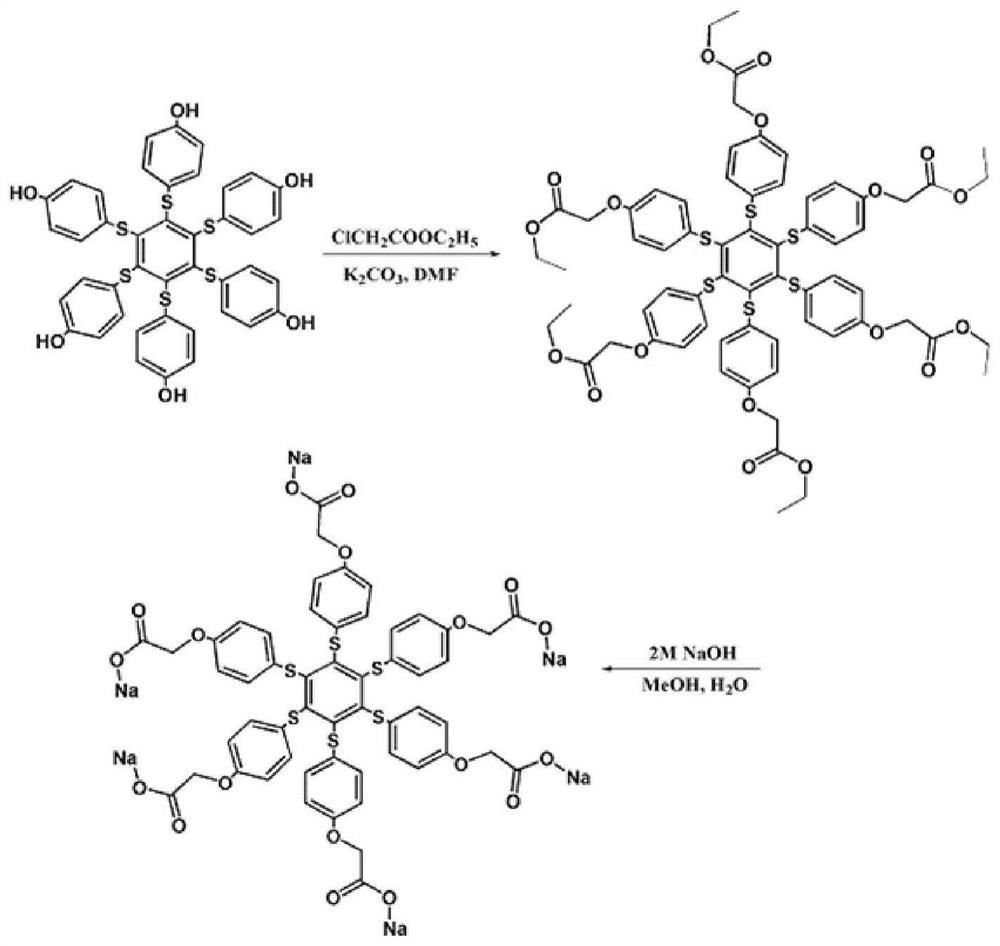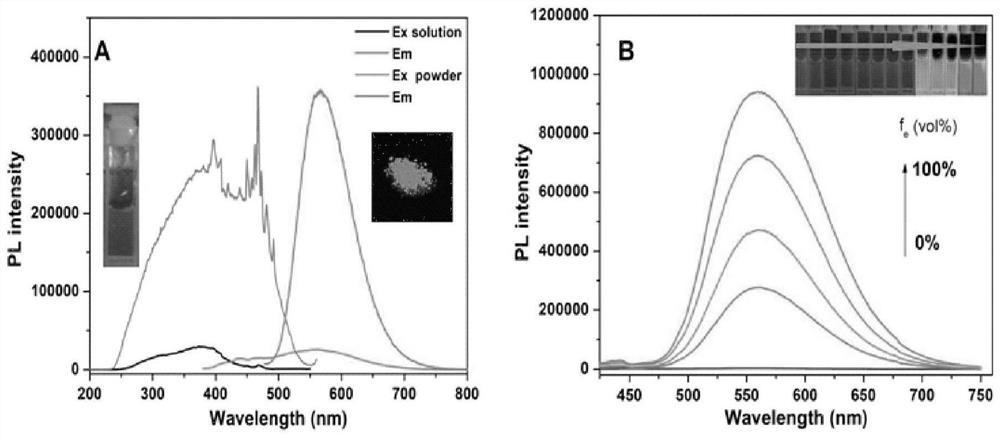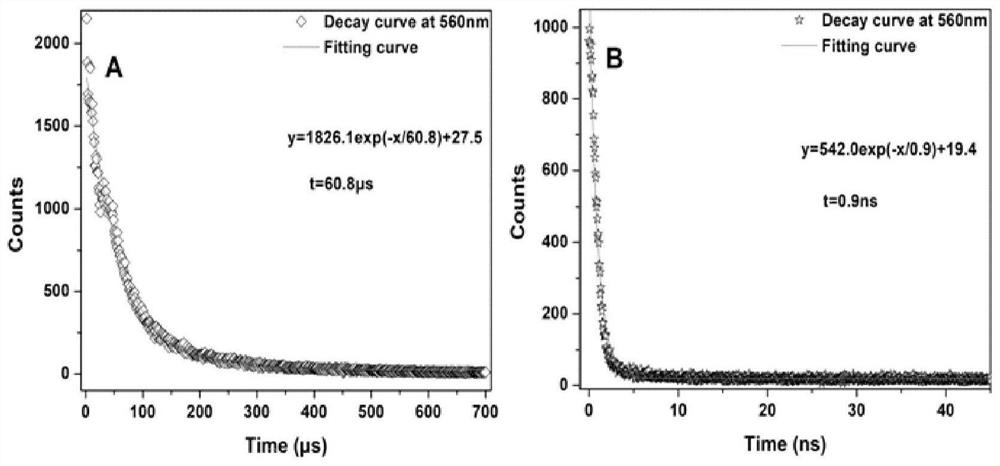Synthesis and application of aggregation-induced phosphorescent molecular probe for detecting and imaging aluminum ions in organism
An aggregation-induced, phosphorescent molecule technology, applied in the field of detection, can solve problems such as poor solubility, affecting the sensitivity and accuracy of tracking Al3+
- Summary
- Abstract
- Description
- Claims
- Application Information
AI Technical Summary
Problems solved by technology
Method used
Image
Examples
Embodiment 1
[0026] Example 1: Synthesis of functionalized HHPB-6OCH2COONa probe and its photophysical properties
[0027] Introducing carboxyl groups to functionalize hexa(4-hydroxy-1-phenylthio)benzene (HHPB) to obtain {4-[penta-(4-ethoxycarbonylmethoxy-phenylthio)-phenylthio) ]-phenoxy}-sodium acetate (HHPB-6OCH2COONa), realizes the combination of the probe to Al3+ by means of the oxygen supply site of the carboxyl group. And by 1H NMR, 13C NMR and mass spectrometry to prove the pure compound molecules. HHPB-6OCH2COONa solid powder exhibits bright luminescence under ultraviolet light irradiation. It is measured that it can be excited by 468nm ultraviolet-visible light, and emits bright yellow light with a maximum emission of 570nm. The solid powder was dissolved in pH 7.0 10mM HEPES buffer solution to prepare a solution with a concentration of 50 μM. It was observed that the fluorescence of the solution was very weak and almost invisible under ultraviolet light irradiation. It is meas...
Embodiment 2
[0028] Implementation Example 2: Detection of specific aluminum ions based on aggregation-induced phosphorescence probes
[0029] HHPB-6OCH2COONa was used as a phosphorescence probe to detect aluminum ions through the enhancement of phosphorescence caused by the coordination reaction initiated by aluminum ions. To detect aluminum ions in aqueous solution, HHPB-6OCH2COOH was first reacted with sodium hydroxide to convert it into a soluble form of the sodium salt. HHPB-6OCH2COOH contains multiple carboxyl groups, and its sodium salt form combines with aluminum ions to produce a bright yellow precipitate in aqueous solution. HHPB-6OCH2COONa (50μM) emits very weak light when dissolved in water. After adding a certain amount of Al3+ (375μM), the luminescence intensity of HHPB-6OCH2COONa increases by 32 times. Therefore, the dynamic binding equilibrium between HHPB-6OCH2COONa and aluminum ions tends to the overall molar ratio of 1:6. The significant change in PL of HHPB-6OCH2COONa...
Embodiment 3
[0031] Implementation Example 3: Time-gated detection of aluminum ions in serum
[0032] Time-gated luminescence (TGL) technology is an effective method to minimize autofluorescence and scattered light, which is suitable for precise sensing and high-contrast imaging using long-lived emitting probes. The long lifetime of HHPB-6OCH2COONa enabled the development of the first time-gated luminescent detection method for aluminum ions using human serum as a composite matrix. Studies have found that human serum has relatively bright autofluorescence even when excited at a long excitation wavelength of 467nm, but its lifetime is very short, on the order of nanoseconds. The large difference in lifetime between HHPB-6OCH2COONa and the serum substrate allows TGL to collect emission signals from HHPB-6OCH2COONa when an appropriate delay time is applied. When no delay was applied, about 1% serum in volume doubled the PL intensity of HHPB-6OCH2COONa added with a fixed amount of Al3+, but t...
PUM
 Login to View More
Login to View More Abstract
Description
Claims
Application Information
 Login to View More
Login to View More - R&D Engineer
- R&D Manager
- IP Professional
- Industry Leading Data Capabilities
- Powerful AI technology
- Patent DNA Extraction
Browse by: Latest US Patents, China's latest patents, Technical Efficacy Thesaurus, Application Domain, Technology Topic, Popular Technical Reports.
© 2024 PatSnap. All rights reserved.Legal|Privacy policy|Modern Slavery Act Transparency Statement|Sitemap|About US| Contact US: help@patsnap.com










